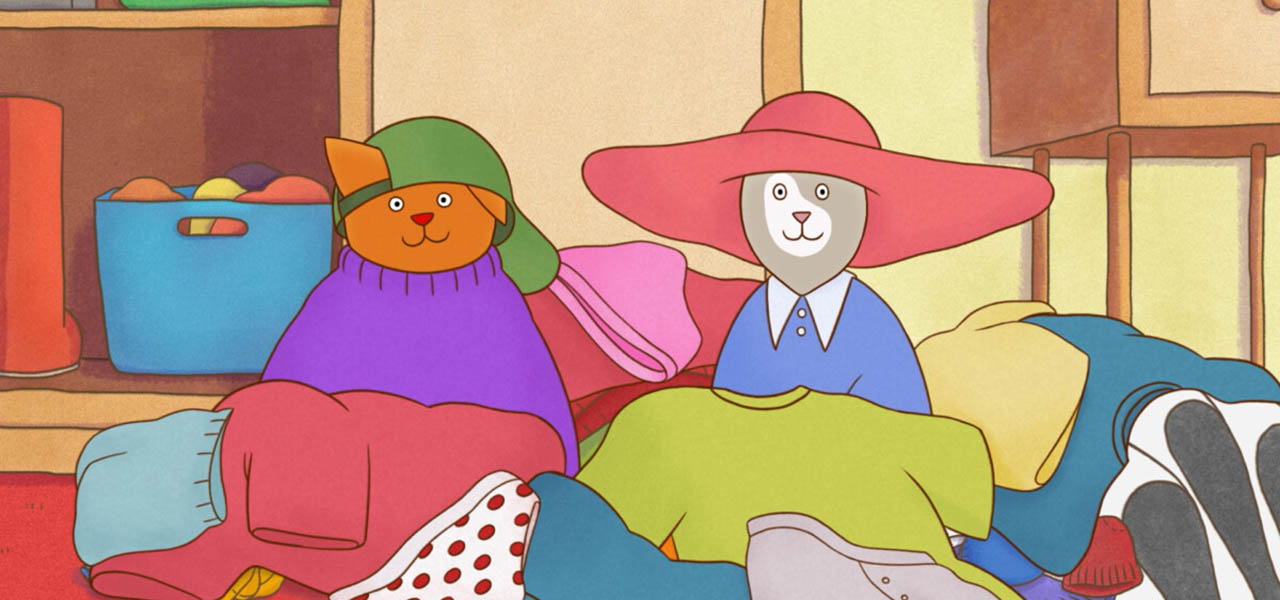
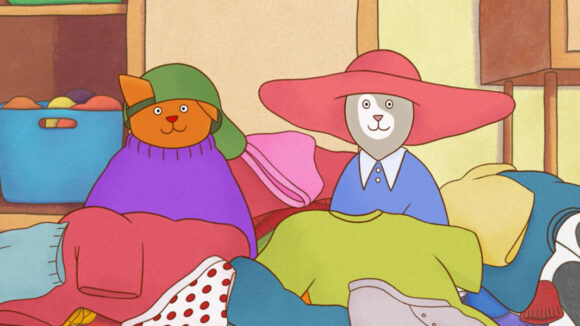
Behind The Whiskers: Classic Dutch Character Tummy Tom Becomes A Theatrical Star In A New Hand-Drawn Feature
Bringing a well-known local character to a global audience is always a challenge, but it’s one that Tummy Tom’s creative team were happy to tackle, forty-five years after the character’s first appearance on television in 1978 as part of the Dutch version of Sesame Street.
Dikkie Dik aka Tummy Tom leapt from tv to print in 1983 with the help of Dutch publisher Gottmer, and has since sold millions of copies worldwide. And now, thanks to a Dutch-Belgian co-production between Phanta Animation, BosBros and Eyeworks Film TV & Drama, the lovable yet mischievous fluffy fellow has now landed on the big screen with Tummy Tom and the Lost Teddy Bear.
The first 60-minute feature, budgeted at 2.25 million euro, is aimed at children from three to five. It is the first installment in a four-film project that will take preschoolers around the seasons along with Tummy Tom and his friends. The directors of the first two features are Joost van den Bosch and Erik Verkerk, who were selected to come aboard the project by the late producer, scriptwriter, actor, and Dutch tv legend Burny Bos (1944-2023).
“Burny was the godfather of Dutch family and children television, and he really wanted to make a film about Tummy Tom,” the duo told Cartoon Brew. “When he asked us to come over, we brought our own Tummy Tom books. Everybody in the Netherlands has an average of four. As we went on discussing this adaptation, Burny felt that there was a good connection between us, and the week later, we were developing the project together.”
But bringing Tummy Tom to feature length was no picnic, they explained. “Burny, who wrote the movie, did a really good job because the books are based on these really tiny stories, sometimes no longer than four panels. A milkman delivers milk, a letter comes in the mailbox, and that’s the story. To retain the narrative style and pace of [Tummy Tom creator and author] Jet Boeke while expanding the scope was crucial. In the movie, all these tiny stories happen, but at the same time there’s this big arc of finding Tummy Tom’s teddy bear, so every story becomes part of this bigger adventure. It’s also a way to keep the children’s interest, with songs punctuating the journey, dances, and children’s voices interacting with the story. We wanted to make a theater experience that would appeal to this restless and energetic audience, while paying homage to their favorite kitty.”
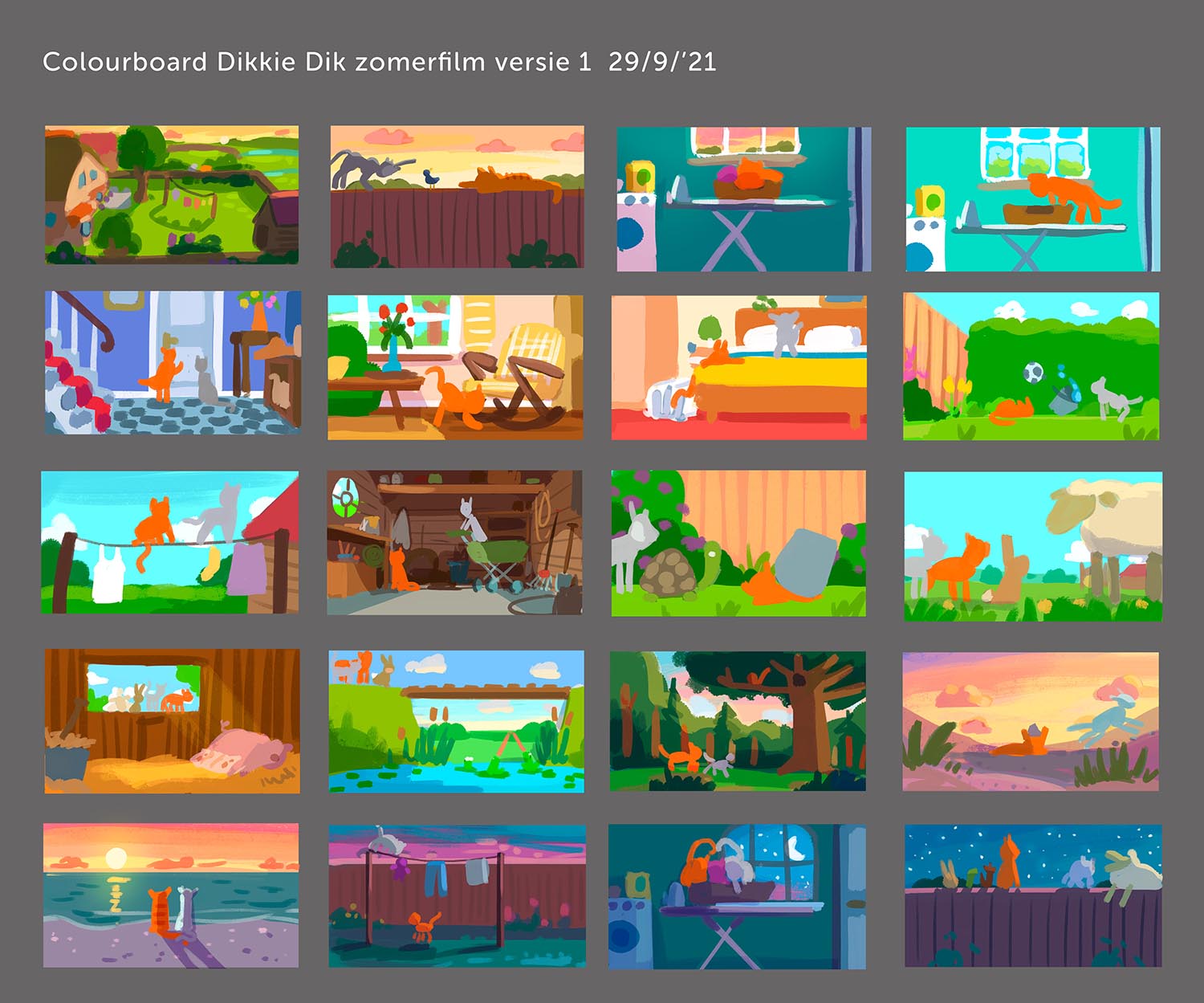
To young viewers accustomed to cg razzle-dazzle, the spare hand-drawn 2d of Tummy Tom and the Lost Teddy Bear may feel out of step with contemporary times, but there was no argument within the team that this was the style they wanted. “Back in the very first meeting, we immediately said that we should stick with the original design of Tummy Tom,” van den Bosch and Verkerk said. “Everybody knows these nostalgic books, and they recognize it because of how it looks. Changing it would mean creating something new, and losing so much. So we stuck with Boeke’s beautiful style and a voice-over with real cat sounds for our characters. But we still had to animate and build a world around them. Realism was one of our main points.”
They further added, “We wanted him to move 70% like a real cat, 20% like a kid, and 10% like a cartoon character, when he does things an actual cat could not do. And that aim to achieve realism also brought us the film’s cinematography. Most of our shots are a minute long, sometimes two minutes, which was quite interesting for our team of animators to work on. When you get a shot that long, while doing your own in-betweens, you’re basically making your own little short film within the movie, and that was really special for the animators as well. We were lucky enough to find many talented senior 2d animators who did a wonderful job on this film, and most of them want to come back for the second one.”
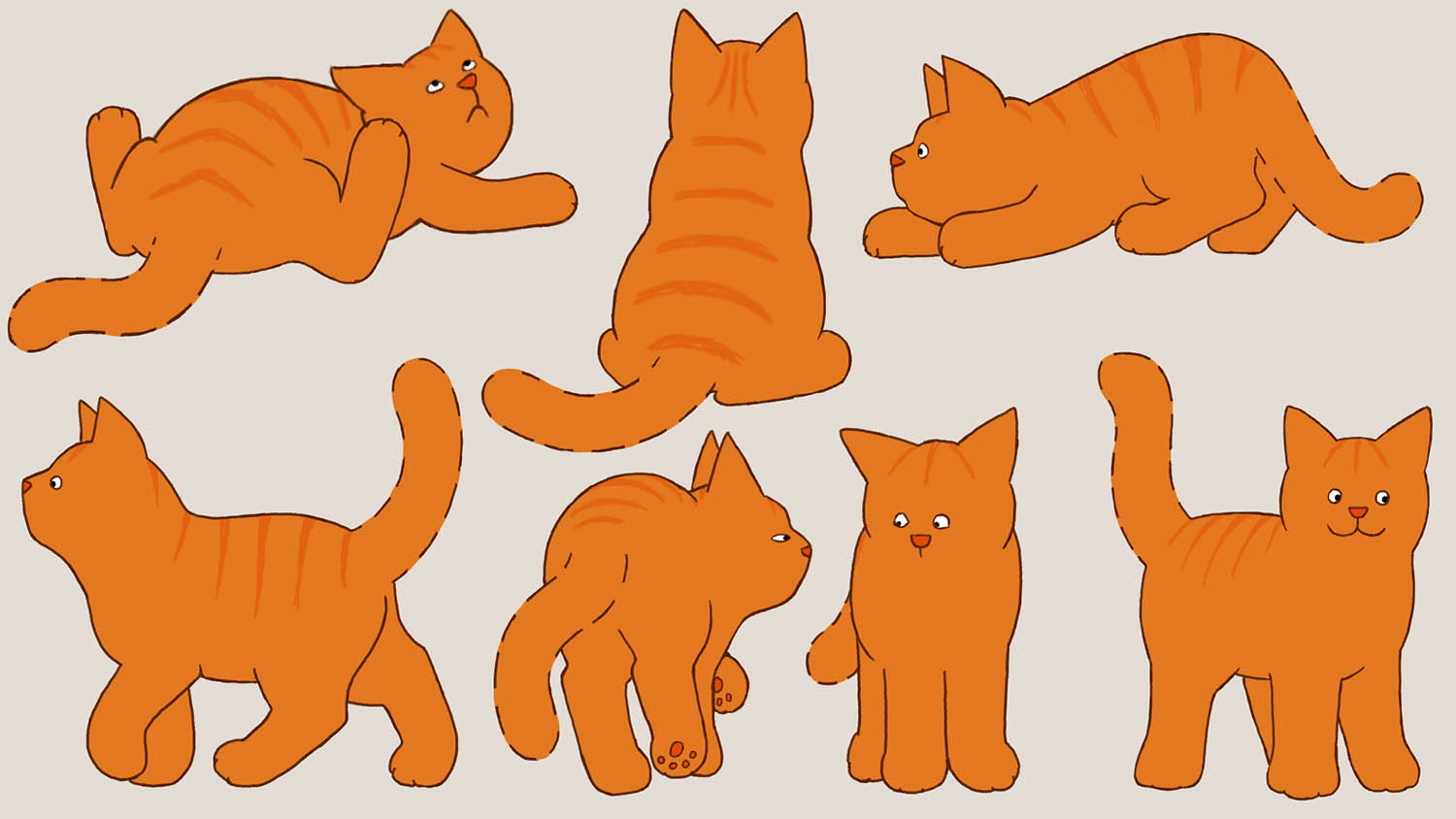
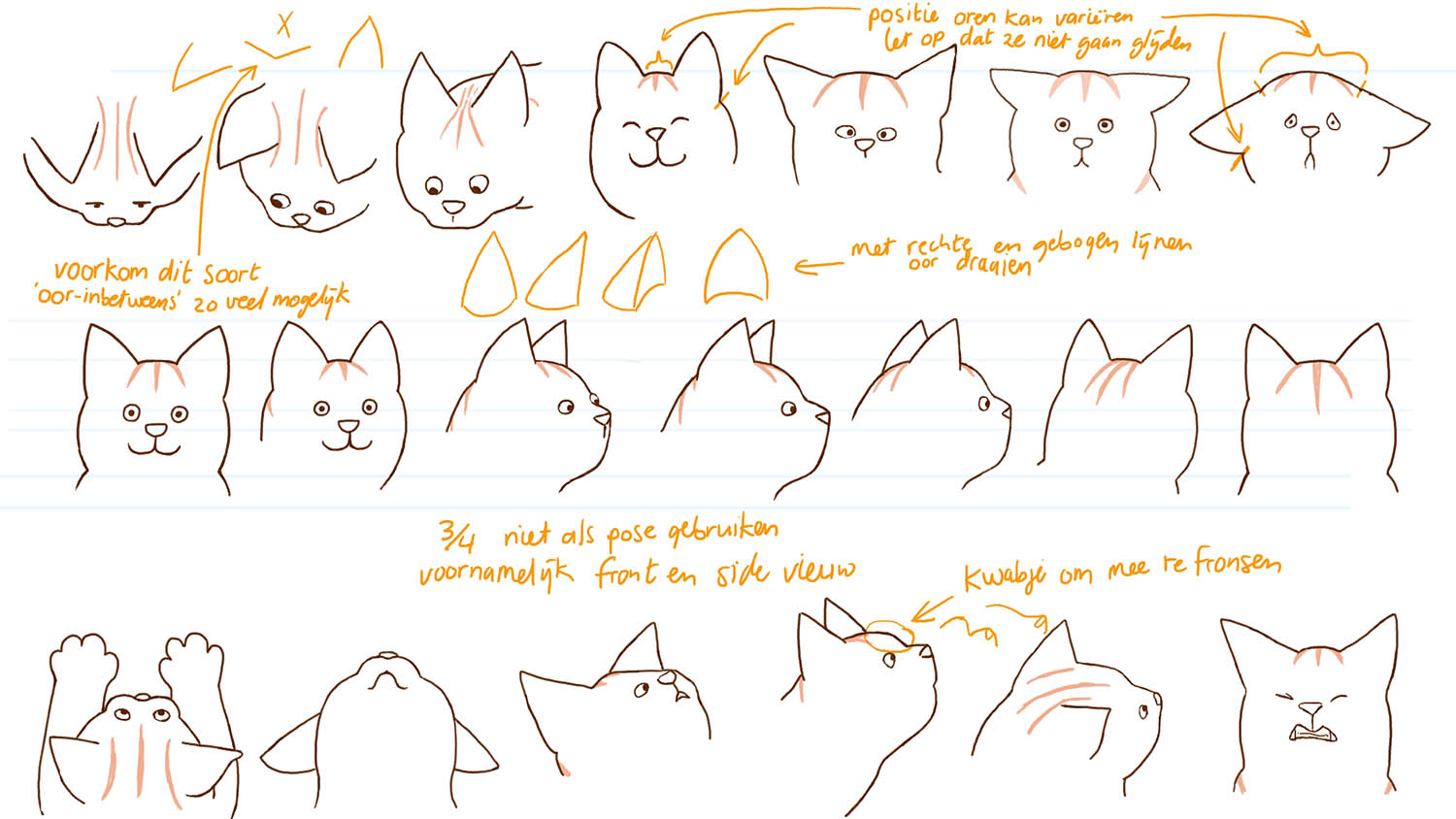
Research was necessary for van den Bosch and Verkerk to capture the realism of cat motion. “We watched countless hours of cat videos on Youtube to get our cats right,” they said. “Turns out a cat doesn’t sneeze like a human, and that’s something we learned by browsing ten-hour compilation of sneezing cats. Because our main target audience is three-to-five years old, we also really wanted the parents to have a nice time and see their own pets in our characters.”
Figuring out the production design was another challenge as the character is often posed in an austere environment with few props and no background. “Boeke only drew the essential in her stories, sometimes without consistency. Of course we had to expand the designs, the world of Tummy Tom to make it coherent with her touch. And for this film, she was with us every step of the way, even though she was unfamiliar with animation. We owe a big thanks also to our great art director, Leo de Wijs, who created this whole new world based on the few indoor sets, always quoting the books.”
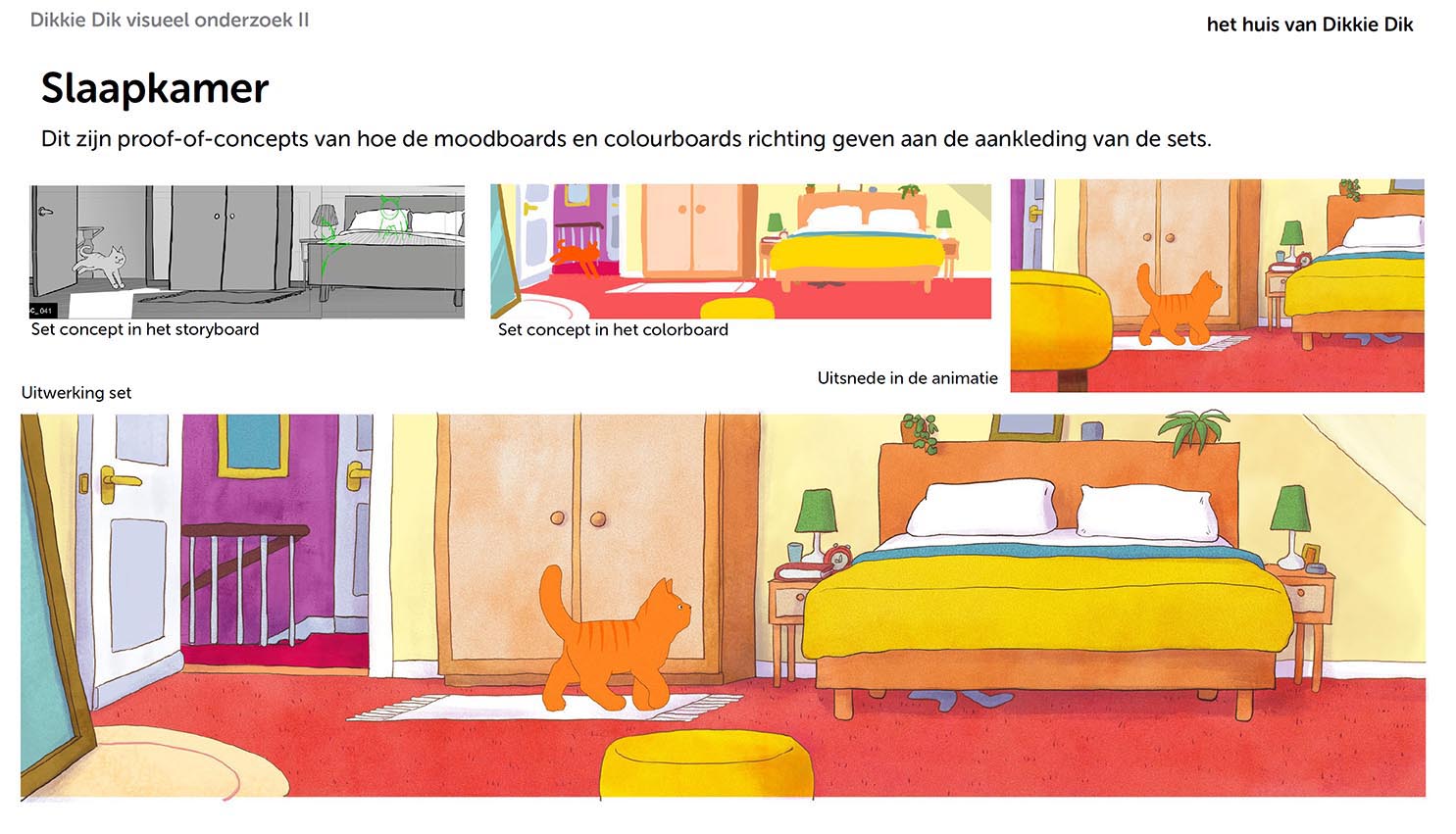
Van den Bosch and Verkerk have worked together for a long time. Working together since Art Academy, they sharpened their animated skills at Cartoon Saloon for one year before they came back to the Netherlands to start their own company, Ka-ching Cartoons, in 2007. “We’ve built our expertise with a lot of freelancers we met during our time at Cartoon Saloon. Working from project to project, we have the ability to scale up and down with the people we collaborate with, and that suits us very well while keeping us creatively challenged.” The studio has produced several animated tv shows, as well as short films such as Nicolas Keppens’ recent festival fave Beautiful Men, as well as animated adaptations of other classic Dutch characters.
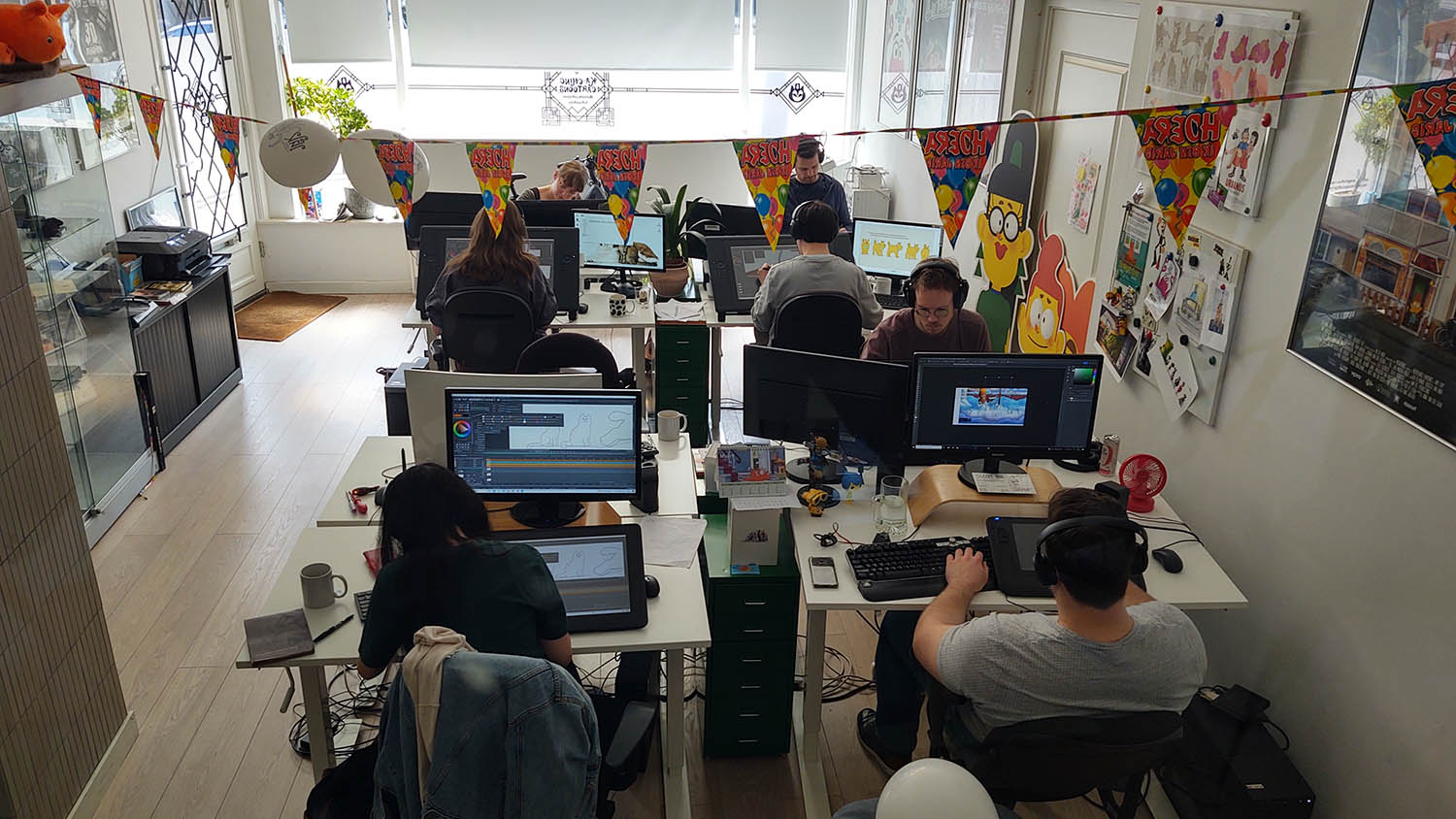
With Tummy Tom and the Lost Teddy Bear now in theaters, van den Bosch and Verkerk have moved into production on the second film, A New Friend for Tummy Tom, which will keep the same style, but now in a winter setting. “I’ve already been three times to my own movie”, said a cheerful Verkerk, “and be it a packed screening or a quiet day, it still works and children shout and clap. As soon as they hear the soundtrack, they realize they can interact with the film. It lowers the barriers for them, and they get very lively.” Parents might also end up longing for more, as Tummy Tom’s catchy tunes have an earworm quality.
In the Netherlands, where kids may discover the film through dedicated children screenings called Mini-Mornings, Tummy Tom and the Lost Teddy Bear opened #5 in June at the national box office. The Dutch version will hit Belgian screens mid-September with KFD as distributor.

